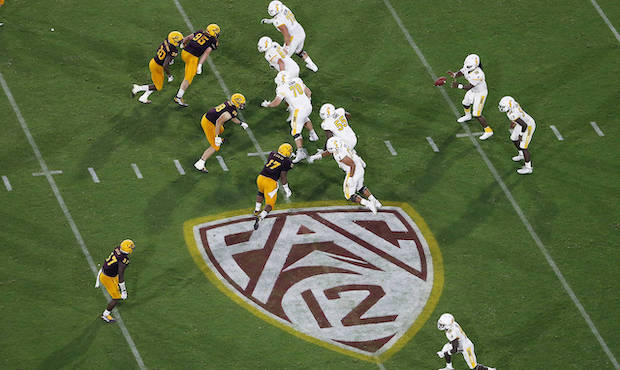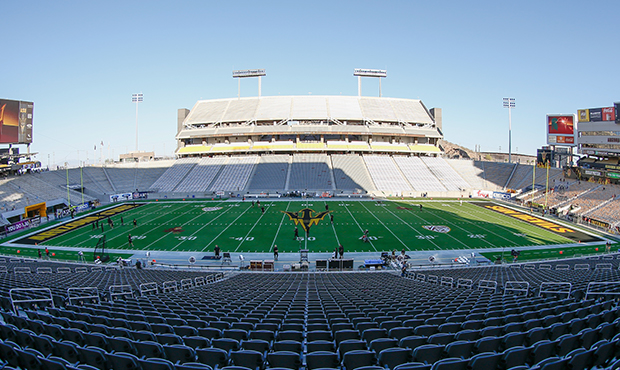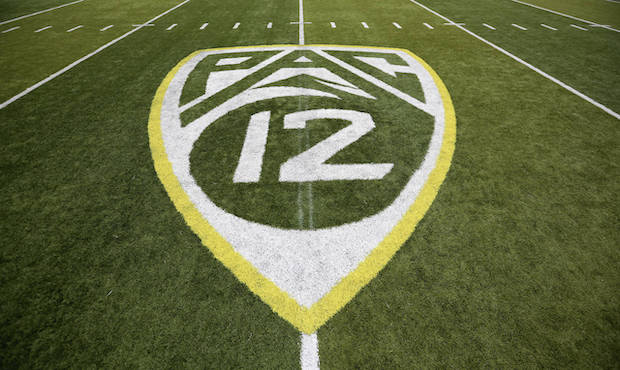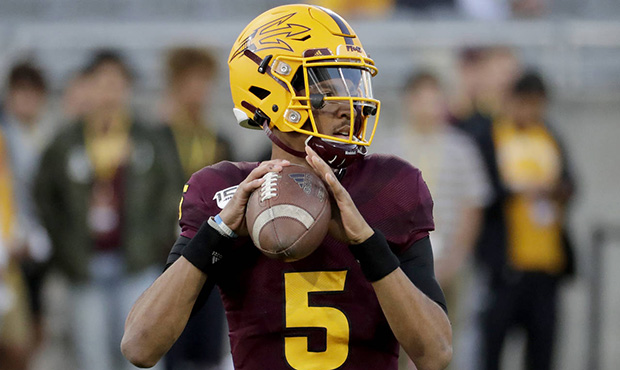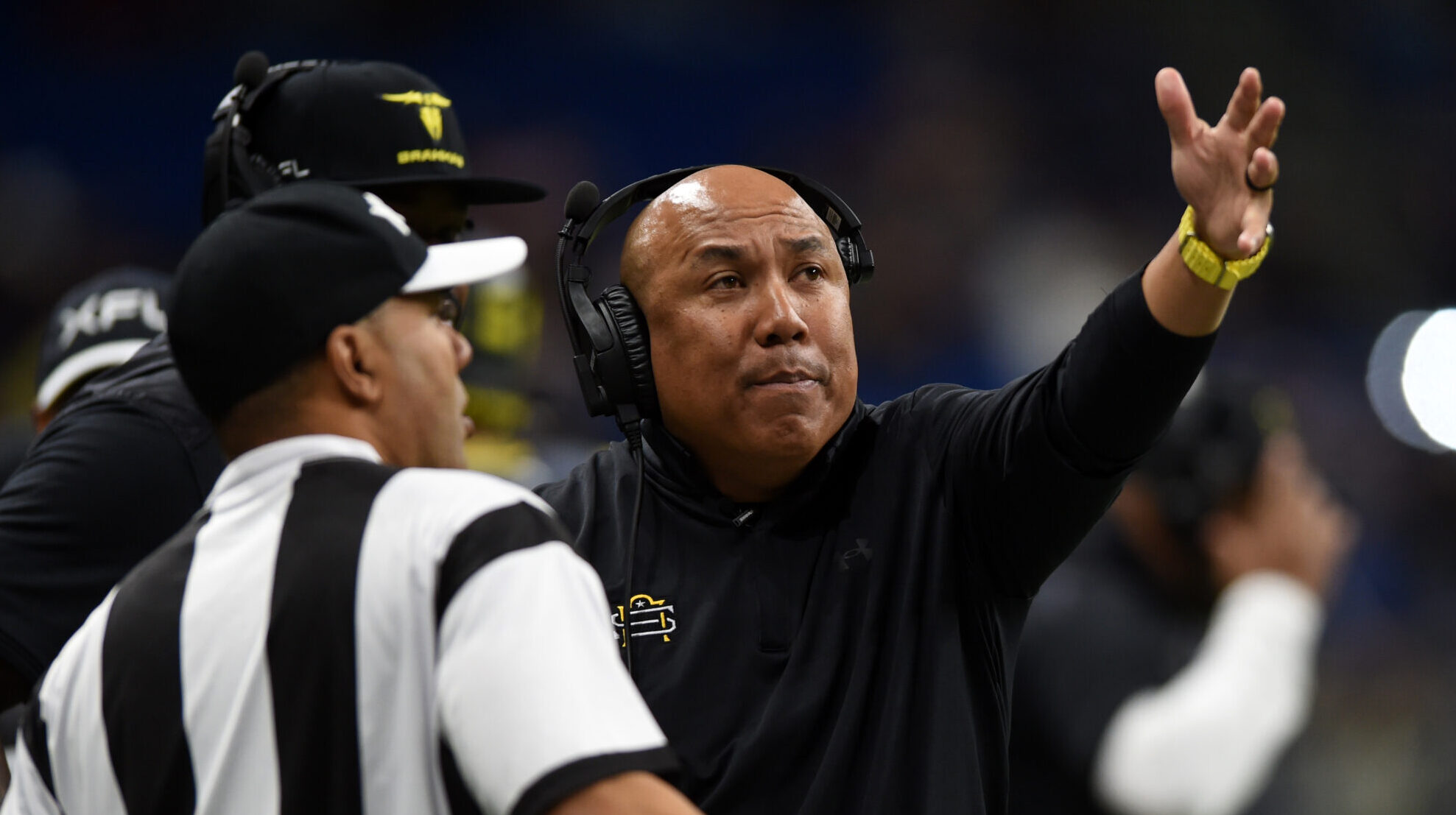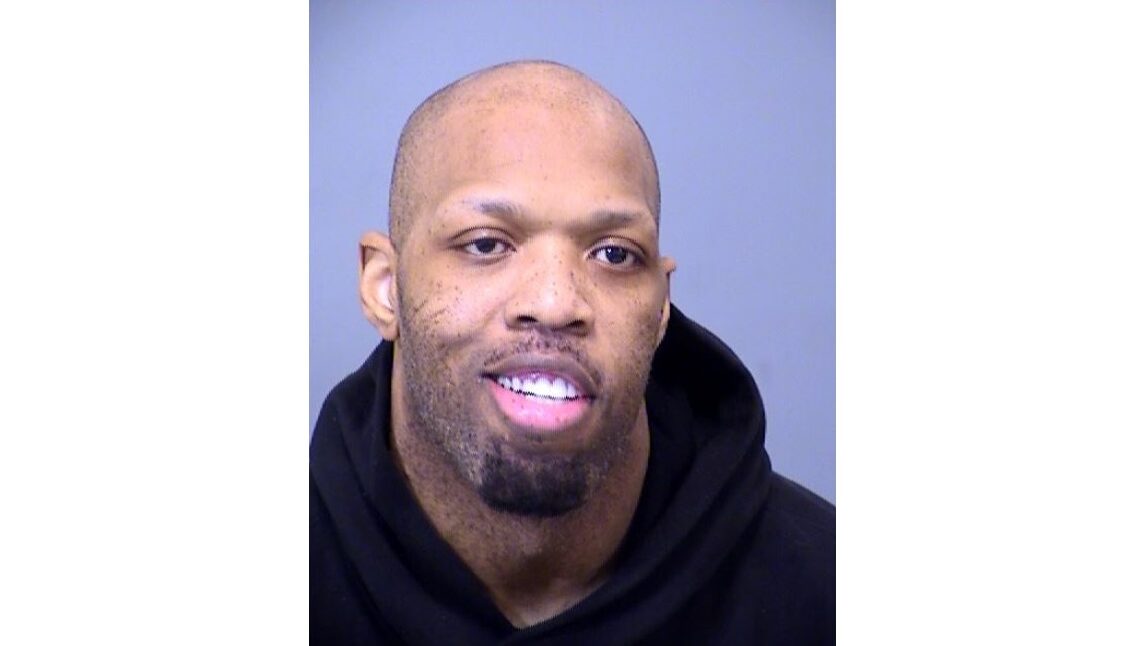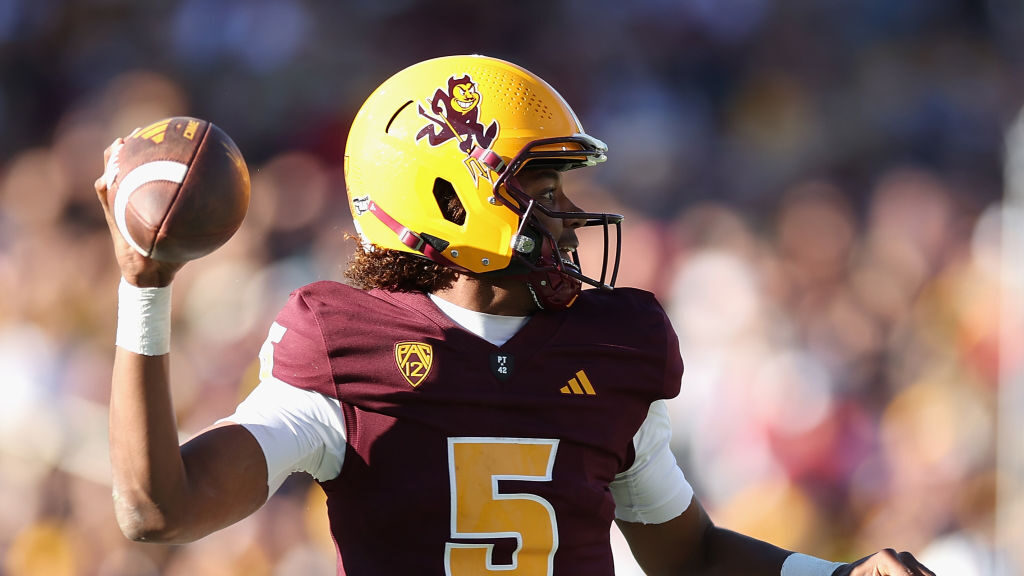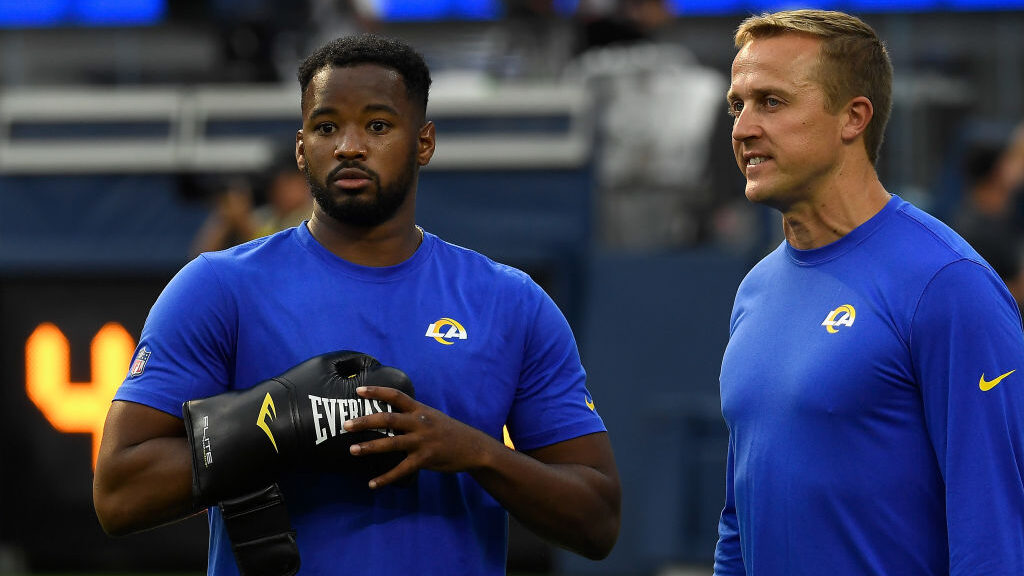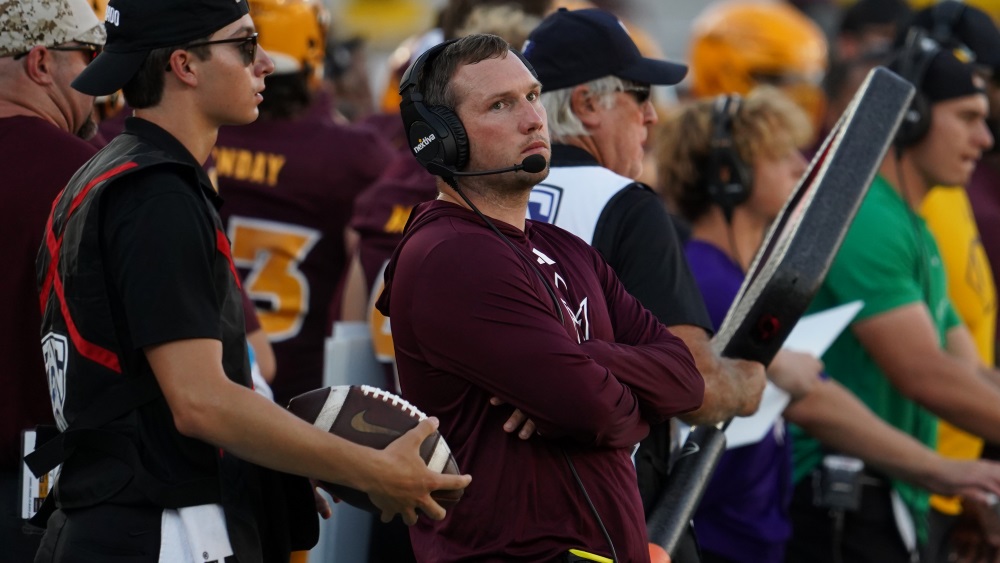Pac-12 football: The path to Thursday’s vote to start the regular season
Sep 24, 2020, 6:09 PM | Updated: 8:45 pm
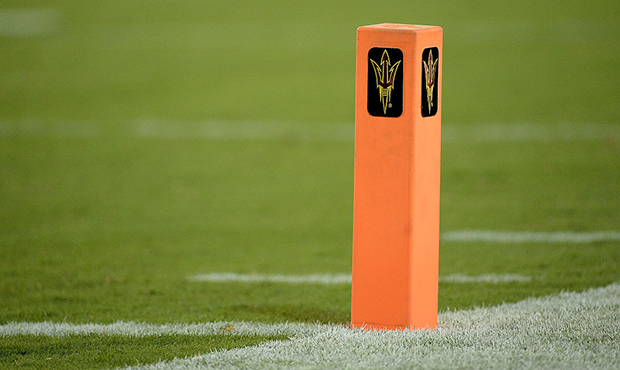
A detail view of the a pylon sitting on the field at Sun Devil Stadium during the game between Northern Arizona and Arizona State on September 3, 2016 in Tempe, Arizona. (Photo by Jennifer Stewart/Getty Images)
(Photo by Jennifer Stewart/Getty Images)
It’s safe to say that 2020 has not been kind to collegiate conferences like the Pac-12, with cancellations and COVID-19 cases galore.
Here are some of the stories that headlined a turbulent year for the Conference of Champions, and how it got to the return of fall sports on Thursday.
March 12: Pac-12 men’s basketball tournament canceled
The Pac-12 joined its peers when it pulled the plug on the men’s basketball tournament in mid-March. Who else remembers that Arizona held off Washington, or that Washington State stunned Colorado on the tournament’s first (and only) day of competition?
ASU was slated to play the Cougars in the tournament’s second round, only to have their contest canceled hours before tip-off.
It was an eerie (and strange) 24 hours in the Sin City, but merely a prelude to what would come next in 2020.
March 14: Pac-12 cancels all spring sports
The next domino to fall in the Pac-12’s 2020 to forget happened on a Saturday, a mere 48 hours after the aforementioned basketball cancellations.
That domino would be the figurative plug being pulled on the conference’s spring sports schedule, ending the national title hopes of conference heavyweights like ASU’s baseball team and Arizona’s softball program.
In a statement released that day, the conference laid out its sports-free spring season and set a new standard to the term March Madness.
“At a meeting of the Pac-12 CEO Group and Athletic Directors earlier today, the Pac-12 made the decision to cancel all Pac-12 conference and non-conference sport competitions and Pac-12 championships through the end of the academic year, including spring sports that compete beyond the academic year. This decision follows both the Pac-12’s earlier decision to suspend all sports until further notice, and the decision by the NCAA to cancel the Division I men’s and women’s 2020 NCAA basketball tournaments as well as all remaining winter and spring NCAA championships.”
July 31: Pac-12 releases tentative, conference-only football schedule
Fast forward four months and the Pac-12’s focus turned to its football season. The conference on the final day of July announced that its members would play a 10-game, conference-only schedule.
That schedule called for many of the league’s marquee rivalries — such as the Territorial Cup clash between ASU and Arizona — would be played during the opening week of the campaign on Sept. 26.
The sense of optimism was bountiful on the conference’s Zoom call with commissioner Larry Scott, Stanford football coach David Shaw, ASU athletic director Ray Anderson and more.
Aug. 2: #WeAreUnited movement launches on social media
The reality of playing football during a pandemic took on a whole new meaning in early August after a cadre of football players published a list of demands on The Players’ Tribune.
The article stated a range of demands that needed to be met for a football season to take place, ranging from compensation and guaranteed scholarships for players to taking concrete steps to eradicate racism in higher education.
The demands were soon echoed in conferences across the country, with players from the Big Ten, Mountain West and more voicing similar demands in the days and weeks to come.
Aug. 11: Pac-12 postpones its football season to spring
The conference’s optimistic view for football lived a grand total of 12 days before reality came crashing down. The Pac-12, mere hours after fellow Power Five conference, the Big Ten, decided to postpone football until the spring semester.
Scott laid out the conference’s rationale in a neatly-worded statement that day, saying that playing football in a pandemic was impossible.
“All of the Pac-12 presidents and chancellors understand the importance of this decision, and the disappointment it will create for our student-athletes, the coaches, support staff and all of our fans,” Oregon president Michael Schill said in a statement.
“Ultimately, our decision was guided by science and a deep commitment to the health and welfare of student-athletes. We certainly hope that the Pac-12 will be able to return to competition in the New Year.”
Much was also made about the cardiovascular ailment, myocarditis, which had affected players at various schools.
It appeared that collegiate football was done for the year, but such a sentiment wouldn’t last long.
Sept. 24: Pac-12 CEO Group meeting approves restart of all football activities
The Pac-12’s long and winding road hit its final step on Thursday, when presidents and chancellors from across the conference agreed on starting their football season on Nov. 6.
The conference will play seven games between Nov. 6 and Dec. 19, allowing the conference’s champion to have a shot at playing in the College Football Playoff.


